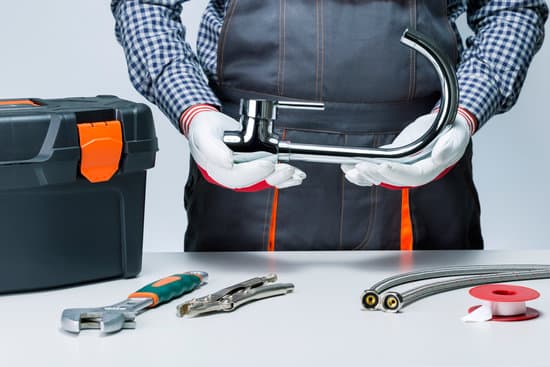Are you wondering how to improve a split-level home? Split-level homes can pose unique challenges when it comes to design and functionality. From awkward layouts to limited natural light, there are several aspects that may need improvement to enhance the overall look and feel of your split-level home. In this article, we will explore different ways to address these challenges and make the most out of your split-level home.
First, we will discuss how you can maximize curb appeal by enhancing the exterior of your split-level home. Then, we will move on to optimizing the entryway, creating an open concept layout, and utilizing natural light. Additionally, we will delve into incorporating modern design elements and adding storage solutions to maximize space. Lastly, we will explore ideas for enhancing indoor-outdoor flow in your split-level home.
Whether you’re looking to update the interior, create more functional spaces, or simply improve the overall aesthetic of your split-level home, this article will provide you with practical tips and ideas for transforming your living space. So let’s dive in and discover how you can overcome the challenges of owning a split-level home and turn it into a stylish and functional oasis.
Maximize Curb Appeal
If you own a split-level home and are looking to improve its overall appeal, maximizing the curb appeal of your property is a great place to start. The exterior of your home is the first thing that guests and potential buyers will see, so it’s essential to make a positive impression. Here are some tips for enhancing the exterior of your split-level home:
- Landscaping: Consider adding some landscaping elements such as flower beds, shrubs, or trees to add visual interest to the exterior of your home. A well-maintained lawn and garden can go a long way in improving curb appeal.
- Exterior Lighting: Installing outdoor lighting can not only enhance the aesthetic appeal of your split-level home but also improve security. Consider adding pathway lights, porch lights, or even solar-powered accent lights to illuminate key features of your home’s exterior.
- Exterior Paint: Updating the exterior paint color or giving the existing paint a fresh coat can instantly transform the look of your split-level home. Consider choosing a color scheme that complements the architecture of your home while making it stand out from neighboring properties.
By focusing on these aspects, you can significantly enhance the exterior appearance of your split-level home and create an inviting atmosphere for both residents and visitors.
Optimize the Entryway
When it comes to split-level homes, the entryway is a crucial focal point that sets the tone for the rest of the house. It’s essential to create a welcoming and functional entry space that makes a great first impression while also serving the practical needs of your household. Here are some ideas for optimizing the entryway of a split-level home.
Define the Space
To improve a split-level home’s entryway, it’s important to define the space and create a sense of arrival. One way to achieve this is by using furniture and decor elements such as an area rug, a console table, or a stylish bench. These items not only add visual interest but also provide practical functions like storage and seating.
Add Lighting Elements
Another effective way to enhance the entryway of a split-level home is by incorporating lighting elements. Good lighting can instantly make the space feel more inviting and well-lit. Consider installing wall sconces, pendant lights, or even a statement chandelier to illuminate the area and add some personality.
Incorporate Functional Storage Solutions
In many split-level homes, space can be limited, especially in the entryway. To maximize functionality, look for creative storage solutions that tuck away clutter while still maintaining an organized and welcoming ambiance. This could include built-in shelves or cabinets for shoes and outerwear, wall hooks for keys and bags, or even stylish baskets for storing miscellaneous items. By keeping clutter at bay, you can ensure that your entryway remains both aesthetically pleasing and practical.
By following these tips for optimizing the entryway of a split-level home, homeowners can create an inviting and functional space that sets the stage for the rest of their living environment.
Open Up the Space
One of the common challenges of split-level homes is the potential for a cramped and segmented layout. However, with some strategic design choices, it is possible to open up the space and create an open concept layout that enhances the flow and functionality of a split-level home.
To improve a split-level home and create an open concept layout, consider implementing the following strategies:
- Remove Non-Load-Bearing Walls: Consult with a professional to identify non-load-bearing walls that can be safely removed to open up the space between different levels of the home.
- Install Wide Openings: For areas where removing walls may not be feasible, consider widening doorways or installing archways to create a more open and connected feel between rooms.
- Use Consistent Flooring: Choose one type of flooring material, such as hardwood or laminate, throughout the main living areas to visually connect different spaces and create a sense of continuity.
In addition to these strategies, incorporating cohesive color schemes and utilizing furniture placement to define separate areas within an open layout can further enhance the overall flow and function of a split-level home. By implementing these design techniques, homeowners can effectively improve their split-level homes by creating an inviting and spacious open concept layout that meets their needs and preferences.
Utilize Natural Light
Split-level homes often have unique challenges when it comes to natural lighting due to their multiple levels and varying floor heights. However, with the right strategies, it is possible to enhance the natural lighting in these homes and create a brighter, more welcoming space.
Choose the Right Window Treatments
One of the simplest ways to enhance natural lighting in a split-level home is by choosing the right window treatments. Opt for lightweight curtains or sheer blinds that allow plenty of natural light to filter into the space. Avoid heavy drapes or dark-colored window coverings that can block out precious sunlight.
Strategic Placement of Mirrors
Another effective way to maximize natural lighting in a split-level home is by strategically placing mirrors throughout the space. Mirrors can help reflect and bounce light around the room, making it feel brighter and more open. Consider placing mirrors opposite windows or other sources of natural light to amplify their effect.
Consider Skylights or Solar Tubes
For areas of the home that lack sufficient natural light, consider installing skylights or solar tubes. These can be especially beneficial in lower-level rooms or areas with limited access to windows. Skylights and solar tubes can bring in additional sunlight, creating a more airy and spacious feel.
By utilizing these strategies, homeowners can significantly improve the natural lighting in their split-level homes, creating a brighter and more inviting living environment. Ultimately, enhancing natural light can have a profound impact on the overall look and feel of a split-level home, making it a more enjoyable place to live.
Incorporate Modern Design
When it comes to improving a split-level home, incorporating modern design can help to update the interior and create a more stylish and cohesive space. One effective way to achieve this is by choosing a contemporary color palette.
Opt for neutral tones like whites, greys, and earthy hues to create a modern and timeless look. Additionally, consider adding pops of color through accent pieces such as throw pillows, artwork, or rugs to add visual interest and personality to the space.
Another important aspect of modern design in split-level homes is selecting sleek and streamlined furniture. Look for pieces with clean lines and minimalistic design that will complement the architecture of the home. This can help to create a sense of openness and simplicity, which are key elements of contemporary style. In addition, utilizing multifunctional furniture such as modular sofas or storage ottomans can be beneficial in optimizing the space in split-level homes.
It’s also crucial to pay attention to lighting when updating the interior of a split-level home with contemporary style. Incorporating statement lighting fixtures like pendant lights or chandeliers can instantly elevate the overall look of the space. Furthermore, integrating smart lighting solutions that allow for adjustable brightness and color temperature can enhance both ambiance and functionality in different areas of the home.
| Modern Design Tips | Benefits |
|---|---|
| Choose neutral color palette | Creates modern & timeless look |
| Select sleek furniture | Complements architecture & optimizes space |
| Incorporate statement lighting fixtures | Elevates overall look & enhances functionality |
Add Storage Solutions
Adding adequate storage solutions to a split-level home is crucial for maximizing space and reducing clutter. With the unique layout of split-level homes, it can be challenging to find the right storage solutions that work effectively without compromising the aesthetic and functionality of the space. However, there are several creative storage ideas that can help improve organization and make the most out of every area in a split-level home.
One effective way to add storage solutions in a split-level home is by utilizing under-stair space. The often-overlooked area under the stairs can be transformed into functional storage, such as built-in shelves, cabinets, or even a cozy reading nook with integrated storage compartments. This not only maximizes space but also adds character to the home.
Another useful storage solution for split-level homes is incorporating multi-functional furniture pieces. Look for items like ottomans with hidden storage, coffee tables with built-in shelving, or bed frames with drawers underneath. These versatile furniture pieces not only serve their primary purpose but also provide additional storage options, making them ideal for compact living spaces like those in split-level homes.
Lastly, consider installing wall-mounted shelving or floating shelves in various rooms throughout the home. Wall-mounted shelves not only provide practical storage for books, decorative items, and essentials but also create visual interest and contribute to an open and airy feel in a split-level home.
With these creative storage solutions, it’s possible to improve organization and maximize space in a split-level home without sacrificing style or functionality.
| Storage Solutions | Benefits |
|---|---|
| Under-stair Storage | Maximizes space and adds character |
| Multi-functional Furniture | Provides additional storage options |
| Wall-Mounted Shelves | Improves organization and adds visual interest |
Enhance Indoor-Outdoor Flow
One of the key features that often sets split-level homes apart from traditional single-level homes is the potential for unique indoor-outdoor flow. However, in many cases, these homes may not fully optimize this feature. There are several strategies for creating a seamless transition between indoor and outdoor spaces in a split-level home, enhancing the overall functionality and enjoyment of the property.
One effective way to enhance the indoor-outdoor flow in a split-level home is by adding a deck or patio that extends directly from the main living area. This can create an easy transition for homeowners and guests to move between the interior and exterior spaces, making it more convenient to entertain or simply enjoy the outdoors.
Additionally, incorporating large sliding glass doors or folding glass walls can help to visually connect these spaces and bring more natural light into the home.
Another way to improve the flow between indoor and outdoor areas in a split-level home is by creating designated outdoor “rooms” that mirror interior living spaces. For example, adding a comfortable seating area, dining space, or even an outdoor kitchen can make the backyard feel like an extension of the home’s interior. By using similar design elements and colors inside and out, homeowners can achieve a cohesive look that seamlessly connects both areas.
Finally, landscaping plays a crucial role in enhancing indoor-outdoor flow in a split-level home. Well-placed trees, plants, and hardscaping elements can create visual interest and define outdoor areas as distinct living spaces.
Incorporating pathways or walkways that lead from indoor areas to various outdoor “rooms” can also encourage movement between these spaces and enhance the overall flow of the property. Ultimately, maximizing indoor-outdoor flow in a split-level home involves thoughtful design choices that prioritize connectivity and functionality between these two important areas of the property.
Conclusion
In conclusion, split-level homes present unique challenges when it comes to design and functionality. However, with the right approach and a bit of creativity, it is possible to enhance these homes and create a beautiful, functional space that meets the needs of modern homeowners.
By following the tips outlined in this article, homeowners can improve their split-level homes to maximize curb appeal, optimize the entryway, open up the space, utilize natural light, incorporate modern design, add storage solutions, and enhance indoor-outdoor flow.
One of the key takeaways from this article is the importance of creating a seamless transition between indoor and outdoor spaces in a split-level home. By utilizing design strategies such as large windows, sliding glass doors, and outdoor living areas, homeowners can blur the lines between inside and outside, creating a more cohesive living experience.
Additionally, incorporating modern design elements and maximizing natural light can help to update the interior of a split-level home and create a more contemporary feel.
Overall, improving a split-level home requires thoughtful planning and strategic design choices. By maximizing curb appeal, optimizing the entryway, opening up the space, utilizing natural light, incorporating modern design elements, adding storage solutions, and enhancing indoor-outdoor flow, homeowners can transform their split-level homes into stylish and functional spaces that meet their needs for years to come. With the right approach and a bit of creativity it’s easy to make your split-level home shine.
Frequently Asked Questions
How Do You Update the Exterior of a Split-Level House?
Updating the exterior of a split-level house can be done by adding new siding or fresh paint to improve its overall curb appeal. Enhancing the landscaping and adding modern light fixtures can also make a difference in updating its look.
Why Are Split-Level Homes Harder to Sell?
Split-level homes may be harder to sell because they can be perceived as outdated and less spacious compared to newer, open floor plan homes. The multiple levels can also be seen as a downside for some buyers who prefer single-level living.
Can You Build Up on a Split-Level House?
It is possible to build up on a split-level house, but it depends on factors such as the structural integrity of the existing house and local building codes. Consulting with a professional architect or contractor is crucial to determine feasibility.

I’m thrilled to have you here as a part of the Remodeling Top community. This is where my journey as an architect and remodeling enthusiast intersects with your passion for transforming houses into dream homes.





